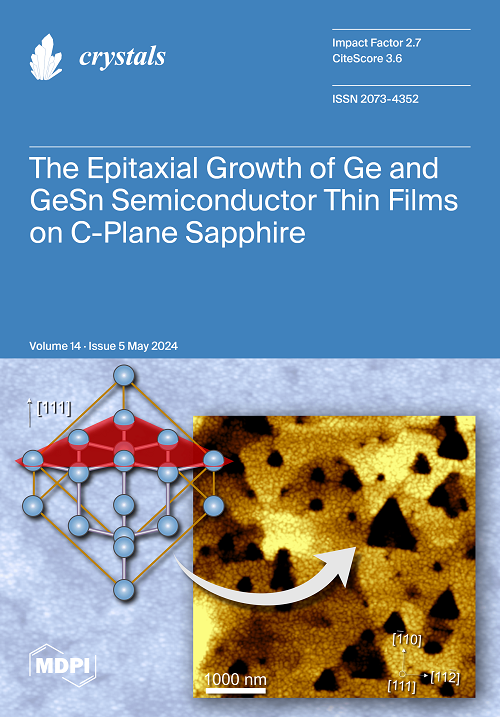光子超晶格中周期性畴壁的嵌套拓扑带隙结构
IF 2.4
4区 材料科学
Q2 CRYSTALLOGRAPHY
引用次数: 0
摘要
我们研究了一维(1D)光子超晶格的嵌套拓扑带隙结构。超晶格的一个晶胞由两种拓扑结构不同的光子晶体(PhCs)组成,因此在两种 PhCs 的界面上存在一个畴壁(DW)态。我们发现,周期性 DW 的耦合可以在原有间隙内形成新的带隙结构。如果对 PhC 的结构或材料参数进行调整,新的带隙结构可能是拓扑非难的,并可能发生拓扑相变。我们从理论上证明,这种耦合 DW 的哈密顿可以简化为简单的苏-施里弗-希格(SSH)模型。然后,如果两个携带不同拓扑相的超晶格相连,在两个超晶格的界面上就会出现新的拓扑界面态。最后,我们发现了二维(2D)光子超晶格中的嵌套拓扑带隙结构。因此,这种嵌套拓扑结构可以广泛存在于复杂的超晶格中。我们的工作改进了光子超晶格的拓扑研究,并为实现一维和二维光子超晶格中的拓扑界面态和拓扑相变提供了一种新方法。超晶格中的拓扑界面态对频率很敏感,而且精度很高,这正是高性能滤波器和高精细空腔所需要的。本文章由计算机程序翻译,如有差异,请以英文原文为准。
The Nested Topological Band-Gap Structure for the Periodic Domain Walls in a Photonic Super-Lattice
We study the nested topological band-gap structure of one-dimensional (1D) photonic super-lattices. One cell of the super-lattice is composed of two kinds of photonic crystals (PhCs) with different topologies so that there is a domain wall (DW) state at the interface between the two PhCs. We find that the coupling of periodic DWs could form a new band-gap structure inside the original gap. The new band-gap structure could be topologically nontrivial, and a topological phase transition can occur if the structural or material parameters of the PhCs are tuned. Theoretically, we prove that the Hamiltonian of such coupled DWs can be reduced to the simple Su–Schrieffer–Heeger (SSH) model. Then, if two super-lattices carrying different topological phases are attached, a new topological interface state can occur at the interface between the two super-lattices. Finally, we find the nested topological band-gap structure in two-dimensional (2D) photonic super-lattices. Consequently, such nested topological structures can widely exist in complex super-lattices. Our work improves the topological study of photonic super-lattices and provides a new way to realize topological interface states and topological phase transitions in 1D and 2D photonic super-lattices. Topological interface states in super-lattices are sensitive to frequency and have high accuracy, which is desired for high-performance filters and high-finesse cavities.
求助全文
通过发布文献求助,成功后即可免费获取论文全文。
去求助
来源期刊

Crystals
CRYSTALLOGRAPHYMATERIALS SCIENCE, MULTIDIS-MATERIALS SCIENCE, MULTIDISCIPLINARY
CiteScore
4.20
自引率
11.10%
发文量
1527
审稿时长
16.12 days
期刊介绍:
Crystals (ISSN 2073-4352) is an open access journal that covers all aspects of crystalline material research. Crystals can act as a reference, and as a publication resource, to the community. It publishes reviews, regular research articles, and short communications. Our aim is to encourage scientists to publish their experimental and theoretical results in as much detail as possible. Therefore, there is no restriction on article length. Full experimental details must be provided to enable the results to be reproduced. Crystals provides a forum for the advancement of our understanding of the nucleation, growth, processing, and characterization of crystalline materials. Their mechanical, chemical, electronic, magnetic, and optical properties, and their diverse applications, are all considered to be of importance.
 求助内容:
求助内容: 应助结果提醒方式:
应助结果提醒方式:


